Research Article :
Hailu Zeru*, Aynalem Gemechu, Tenaw Andualem, Hayat Seid and Fikadu Mengesha A cross-sectional study was conducted from January to March 2018 to assess the awareness of veterinary drug retail outlets on Antimicrobial Resistance (AMR) and the availability of veterinary antimicrobials in these facilities. Qualitative and quantitative data were collected using a structured questionnaire from a total of 108 retail outlets. The study revealed that there is a difficulty to treat infectious diseases of animals because of AMR which is reported by 70 (64.8%) of the respondents. 80.6% of the respondents believe that use of wrong antimicrobial is the possible cause of AMR and 79.6% use of counterfeit or poor quality antimicrobials, and 70.4% owners self-prescription of medicines for their animals. 59 (54.6%) of them also answered poor husbandry practices such as overcrowding, poor hygiene and sanitation, and poor feeding practice are the possible causes of AMR while 8 (7.4%) and 9 (8.3%) of the respondents do not know the reason for the AMR development and possible solutions for AMR containment, respectively. Only 24 (22.2%) of the dispensers have taken training on antimicrobial selection, use, resistance and resistance containment. Even though antimicrobials such as Oxytetracycline are available in around 90% of the retail outlets, only 70 (64.8%) of the retail outlets receive an average of 14 prescriptions (ranging from one to 200) per week from public and private clinics which shows a practice of antimicrobials dispensing without prescription. Therefore, strong mainstreaming strategies to prevent and control AMR should be developed and implemented. Antimicrobials prescription and dispensing practice should also be well regulated to avoid irrational prescription and dispensing practices. Introduction Antimicrobials
play a critical role in the treatment of terrestrial and aquatic food-producing
animals and plants, helping to assure food safety and quality, animal health
and welfare, and farmer livelihoods. In food animal production, antimicrobials
can be used either to treat sick animals, to prevent diseases from spreading or
to promote faster animal growth by applying low concentrations of antimicrobials
to animal feed [1]. These drugs must be prescribed, presented, dispensed and
used rationally under the proper supervision and involvement of veterinary
professionals [2]. Antimicrobials must be used as specified in the authorized
product information (Summary of Product Characteristics, package leaflet, and
labeling) [3]. Rational use of drugs in veterinary medicine has numerous
benefits, such as increasing efficacy, decreasing the potential adverse
effects, reducing the risk of drug residue and combating the development of microorganism’s
drug resistance [4]. Misuse of antimicrobial agents in human and veterinary
medicine can hinder the effective treatment and
recovery of illnesses in both humans and animals. It is also crucial to preserve
antimicrobial efficacy in order to ensure that animal production keeps pace
with growing global demand for high-quality protein [5]. On the other hand,
irrational use of antimicrobials may pose impacts on the animal and public health
and promoting the development of antimicrobial resistance. Antimicrobial
resistance (AMR) can be defined as the ability of microorganisms
to survive exposure to a specific concentration of a specific antimicrobial
agent (or class of agents) [6]. Resistance to antimicrobials is a
natural, biological evolutionary phenomenon but human practices hasten it [2].
There is a growing consensus that the major risk factor for the development and
acceleration of AMR is excessive and inappropriate antimicrobial use. The
evidence that antimicrobial use in animals contributes significantly to AMR in
human and animal microbial pathogens continue to grow as new epidemiological
studies are conducted [7]. Some of the common factors that contribute to the
development of antimicrobial resistance are lack of regulation and oversight of
use, poor therapy adherence and non-therapeutic use, over-the-counter use of
antimicrobials, availability of counterfeit or poor-quality antimicrobials,
overuse of antibiotics
and the use of broad-Spectrum antibiotics [1,4,6]. The increasing occurrence of
antimicrobial resistance has serious implications for the treatment of animal
disease. It adversely affects both clinical and financial therapeutic outcomes
with effects ranging from the failure of an individual patient to respond to
therapy and the need for expensive and/or toxic alternative drugs to the high
morbidity and mortality rates, increased health care costs and the need for
changes in empirical therapy, more severe or prolonged illness; production
losses; and reduced livelihoods and food security [1,8]. The prevention and containment
strategies of AMR mainly depend on the rational use of antimicrobials. European
Union is also now enforcing its member countries to control the use of
antimicrobials in food-producing animals. Activities associated with the
responsible and prudent use of antimicrobial agents should involve all relevant
stakeholders. Coordination of these activities at the national or regional
level is recommended and may support the implementation
of targeted actions by the stakeholders involved and enable clear and
transparent communications [9]. Pasteurellosis, Trypanosomiasis,
Anthrax, Blackleg, Brucellosis, Mastitis, Footrot and Babesiosis are the most
common microbial diseases in Ethiopia [10,11]. Out of the total prescribed
veterinary drugs in the country, 54.5% of them are antibiotics.
Oxytetracycline, penicillin-streptomycin
fixed combination, and sulfa drugs (sulfadimidine and
sulphamethoxazole-trimethoprim fixed combination) are also the most commonly
prescribed and dispensed antimicrobials [12]. However, S. aureus isolates from
mastitic cows were found highly resistant to Penicillin G, Streptomycin,
Tetracycline, and Sulfamethoxazole-trimethoprim fixed combination [13,14]. The
primary responsibility for the prudent use of antimicrobials lies with the
prescriber, dispenser and the person administering the antimicrobials.
Veterinary drug dispensers are responsible for ensuring that a valid
prescription is presented at the time antimicrobials are supplied, and for
providing clear and correct information on product use. Retailers distributing veterinary
antimicrobial drugs should only do so on the prescription of a veterinarian or
other suitably trained person authorized in accordance with national
legislation and all products should be appropriately labeled [15]. Improving
awareness and understanding of all stakeholders on AMR, surveillance, and
research to strengthen knowledge and evidence, and implementation of effective
sanitation, hygiene and infection
prevention measures are also important to prevent and containment of AMR. Countries
develop their own strategic plans of AMR prevention and containment based on the
magnitude, risk factors and level of awareness of AMR in their country. The
level and type of interventions also base on these grounds. Ethiopia is also
working against AMR in one health approach by developing a containment
strategy. Therefore, this study is aimed to assess the level of awareness of
veterinary drug retail outlets on the trend of AMR and its containment
strategies. Study Methods The study was conducted in
different areas of Ethiopia from January to March 2018 to assess the awareness
of veterinary
drug retail outlets on AMR and the
availability of veterinary antimicrobials in these facilities. A total of 108 retail outlets (39
from Oromiya, 22 from SNNP (Southern Nations Nationalities and Peoples Region),
30 from Amhara, 8 from Tigray, 4 from Afar, 2 from Ethio-Somale and 3 from
Diredawa regions) were included in the study based on their accessibility and
willingness of the personnel to participate on the study. Age, sex, educational
level and work experience of the respondents is also considered as shown in Table 1 below. Data on the drug selection and
dispensing practice of AMs, the awareness of AM use, resistance prevention and
containment, the frequently dispensed drugs and the available antimicrobial
drugs and infection prevention supplies were collected by using a structured
questionnaire. Data collected were filled into Microsoft Excel spread sheet and
screened for data quality and integrity. Descriptive statistics were used to
describe the data and make inferences. Table
1: Sociodemographic characteristic of respondents. Study
Result/Findings Socio-demographic
characteristics of respondents 29 (26.9%) of the retail outlets
were run by females and those 79 (73.1%) are male dispensers. The respondents
have a variety of educational background and experience. Only one has MSc
degree, 31 (28.7%) Doctor of Veterinary Medicine (DVM), 5 animal health degree
and 71 (65.8%) are animal health diploma and animal health laboratory
technicians (Table 1). The average duration of experience was 9 years (range =
1 month to 40 years). Their age also ranges from 19 to 70 years old. Animal
health provision 41 (38%) of the retail outlets
are diagnosing and treating animals in addition to dispensing medicines.
Besides these practices one retailer is also doing artificial insemination and
another one is doing mobile farm management. 73.1% and 67.6% of the
respondents said owners go to nearby veterinary clinic and to veterinary
pharmacy respectively, when their animals get sick. Self-medication of patient
animals by buying medicines from any shop or open market and using traditional
medicines are also indicated by 39.8% and 44.4%
of the respondents (Table 2). Table
2: Owners practices when their animals are sick. 76 (70.4%) of the retailers said
owners are self-prescribing antimicrobials. Oxytetracycline
10% and 20% injections and a combination drug called Pen strep (Procaine
Penicillin G+ Dihydrostreptomycine Sulphate) injection are the most often
requested antimicrobials by the owners as shown on (Table 3). Owners are also requesting
medicines below the recommended dose in 55 (72.4%) of the retail outlets. 64.5%
of the self-prescribing owners request antimicrobials by asking their specific
name and 51.3% of them by asking the category of the medicines. 89.5% and 72.4%
of the retail outlets said owners are self-prescribing antimicrobials, also
mentioned owners are requesting antimicrobials by telling the illness of the
animal and showing previously used medicine package, respectively. Table 3: Self-prescription of antimicrobials by owners reported by retail outlets. Dispensing
practice and job aids to select and dispense medicines 70 (64.8%) of the retail outlets
receive an average of 14 prescriptions (range = 1-200) per week from public and
private clinics. 77 (71.3%) of the outlets use their own experience to select
and dispense veterinary medicines. In addition to that 42.2%, 61.1% and 46.3%
of the retailers use list of veterinary medicines, Veterinary Standard
Treatment Guideline (VSTG) and veterinary medicines formulary as an aid for
selecting and dispensing veterinary medicines, respectively (Table 4). Note:
63.88% of the retail outlets have VSTG and 90.74% and 93.51% of them believe
that VSTG and Veterinary Medicines Formulary are essential for their dispensing
activity, respectively. Table
4: Job aids followed in selecting and dispensing
medicines. Antimicrobial
use and resistance prevention and containment 75 (69.44%) of the retail outlets
are practicing prescribing of antimicrobials in addition to their dispensing
activity. 92%, 56% and 50.7% of them are respectively prescribing
antimicrobials for the purpose of treatment, prophylaxis/metaphylaxis
and growth promotion or fattening (Table
5). Table
5: Purpose of antimicrobials use. Only 37 (34.3%) of the retail
outlets (7 female and 30 male) have had in-service training. Among these 24
(64.86%) of them have taken training on antimicrobial selection and use,
resistance and resistance containment. The respondents mentioned poor diagnosis
because of lack of laboratory facility, equipment’s and consumables and
shortage of diagnostic materials as challenges of animal health service.
Shortage of drugs and poor awareness of owners are also among the challenges
indicated. Difficulty to treat infectious
diseases of animals because of AMR is reported
by 70 (64.8%) of the respondents. 65 (60.2%) of the respondents also know AMR
is a global public health and economic threat, and 18 of them are females. 8
(7.4%) of the respondents (2 female and 6 male) do not know the reason for
antimicrobial resistance. 5 of them are diploma holders and are below 30 years
old. 3 of the respondents who don’t know the cause of AMR have not more than 2
years’ work experience and 3 of them are with 3-6 years of experience. Whereas 80.6% of the respondents
believe that use of wrong antimicrobial is the possible cause of AMR and 79.6%
use of counterfeit or poor quality antimicrobials, 75.9% improper diagnosis and
treatment of infectious disease, 74.1% non-adherence to treatment, and 70.4%
owners self-prescription of medicines for their animals. Sharing of
antimicrobials that are prescribed for some other animal is also mentioned by
70 (64.8%) of the respondents as a possible cause of AMR. 59 (54.6%) of the
respondents also answered that poor husbandry practices such as overcrowding,
poor hygiene
and sanitation and poor feeding practice are the possible causes of AMR. Table
6: Frequency of difficulty in treating animal
infectious diseases and possible reasons. The respondents also give their
suggestion on the possible solutions to prevent and contain AMR. Proper
diagnosis and treatment of infectious diseases, development of new medicines, vaccines
and fast diagnostics, and adherence to withdrawal period of medicines are the
frequently responded mechanisms of AMR containment, accounting 81.5%, 79.6% and
78.7% of the respondents, respectively. Use of quality or legal sources
or non-counterfeit antimicrobials, good husbandry practice and proper animal
waste/manure disposal are also suggested by 74%, 65.5% and 64.8% of the
respondents respectively, as a possible means of AMR prevention and containment
(Table 7). But 9 (8.3%) of the respondents
do not know the possible solutions of AMR containment. Diploma holders are
shown with low awareness of the possible solutions of AMR as they account 5
(55.6%) of the respondents they said do not know, as compared to 3 (33.3%) are
DVM and 1 (11.1%) animal health BSc holders. But work experience doesn’t have
effect on the level of awareness of respondents. Table 7: Suggested
solution to prevent and contain AMR. Availability and
dispensing trend of veterinary antimicrobials Among the most commonly dispensed
ten veterinary medicines four of them are antibiotics, namely Oxytetracycline
injection, Procaine penicillin G+Dihydrostreptomycine
Sulphate, Sulpha
drug and Oxytetracycline powder for oral
solution. Oxytetracycline injection is the
most commonly dispensed medicine listed by 86 (79.6%) of the respondents.
Albendazole is the second drug followed by Ivermectin and Procaine Penicillin
G+Dihydrostreptomycine Sulphate injection enlisted by 84 (77.8%), 77 (71.3%),
70 (64.8%) of the study participants respectively (Table 8). Only 10 (9.25%) and 9 (8.3%) of
the retail outlets mentioned Cloxacillin+Amoxicillin (Intrammamary Injection)
and Isomethamedium Chloride are commonly dispensed medicines respectively. Table 8: The most common
medicines dispensed over the last one year. Upon the observation conducted
during the study Oxytetracycline injection is the most commonly available
antimicrobial in the retail outlets. It is found in 97 (89.8%) of the
retail outlets visited. Oxytetracycline powder, Procaine Penicillin G+Dihydrostreptomycine
Sulphate, Sulfa drugs, and Diminazine Aceturate are the following drugs
commonly available in 62, 60, 60 and 60 dispensaries respectively. Colistin
Sulphate, Amoxicillin,
Enrofloxacillin and Gentamycin are the least available antimicrobials (Table 9). Among the infection prevention
and medical supplies disposable syringe, thermometer, alcohol denatures 70% and
non-disposable syringe are commonly available in the observed retail outlets.
On the other hand an important antiseptic, Chlorhexidine+Ceterimide solution,
is only available in 14 (13%) retail outlets as the above supplies are found in
84,71,67 and 67 retailers. Table
9: Availability of Antimicrobials and Infection
prevention supplies in the ROs. Discussion In this study, the awareness of
the dispensers on the possible causes for the development of AMR and the
strategies to contain it is good. All the contributing factors and possible
solutions mentioned are in accordance with the study conducted by Tackle B, et
al. and with those mentioned on the FAO AMR Containment strategy [4,15].
However, 7.4% and 8.3% of the respondents still don’t know the possible causes
and containment strategies of AMR, respectively. So, this number is not too
small to aggravate the impacts of AMR. The study also reveals few dispensers
(22.2%) have got training on antimicrobials use, AMR and its containment
strategies. This result shows poor implementation of the strategy for the
prevention and containment of antimicrobial resistance for Ethiopia as conducting
regular pre-service and in-service training for practitioners in animal health
and production on the proper use of antimicrobials, resistance prevention, and
containment is put as one strategic action [16]. The major finding of this
study is also dispensing of antimicrobials without prescription, which is in
contradiction with the veterinary drugs and feed administration and control
proclamation no. 728/2019 and with Codex Aliment Arius code of practice to
minimize and contain antimicrobial
resistance [15,17]. Self-prescription of owners, even
by asking the specific name of antimicrobials, is also confirmed by the study
which is the major contributing factor for the development of AMR. Oxytetracycline,
Procaine penicillin G+Dihydrostreptomycine fixed combination and sulpha drugs
are the major veterinary antimicrobial drugs frequently asked by owners and
dispensed without prescription. This result correlates with the high resistance
level of S.aures isolated from mastitic dairy cows to these antimicrobials
reported by Abera, et al and Fit sum T [13,14]. The national AMR prevention and
containment strategy put a principle to conduct regular antimicrobial culture
and sensitivity tests for prescribing and dispensing decisions and ensure the
availability and monitoring the use of and adherence to evidence-based
guidelines and job aids, such as VSTGs, antimicrobial use policies, lists of
veterinary medicines, and standard prescription forms [16]. However, most of
the retail outlets (71.3%) are using their own experience to dispense
antimicrobials instead of evidence based dispensing practices. Conclusion The findings of this study on the
awareness of veterinary drug retail outlets on the trends of AMR and its
containment strategy showed that pre-service and in-service training on
antimicrobials use, resistance and containment strategies are not well
addressed to dispensers, Over the Counter (OTC) dispensing of antimicrobials
when directly asked by animal owners, traditional way of dispensing
antimicrobials without evidence-based tools and aids (such as sensitivity test,
VSTG, VMF, prescription paper, etc). Therefore, efforts are required to
incorporate and revise the course content for undergraduate and postgraduate
animal health professionals to accommodate topics and allocate sufficient time
to AMR prevention and containment. Continuous on-job capacity building training
should be given to veterinary drug dispensers as per the national AMR prevention
and containment strategy. Antimicrobial
prescription and dispensing practice also need
strong regulation to avoid OTC availability and dispensing of antimicrobials. Acknowledgements The study team would like to
thank FAO/UN for both the technical and financial supports. We would also like
to forward our appreciation to VDFACA management for allowing us to seat
together and focus on the study and for its continuous overlook and support. We
are also grateful to the veterinary drug retail outlets for their willingness
to give us important data for this study. References Hailu Zeru Berhe, Senior Veterinary Drug
Registration Expert, Veterinary Drugs and Feed Administration and Control
Authority of Ethiopia, Ethiopia, Tel: +251913832008, E-mail: zeruhailu001@gmail.com Zeru
H, Gemechu A, Andualem T, Seid H and Mengesha F. Awareness of veterinary drug
retail outlets on antimicrobial resistance and its containment strategy in
Ethiopia (2019) Pharmacovigil and Pharmacoepi 2: 16-20. Antimicrobials, Antimicrobial resistance, Veterinary drugs, Retail outlets.Awareness of Veterinary Drug Retail Outlets on Antimicrobial Resistance and its Containment Strategy in Ethiopia
Abstract
Full-Text
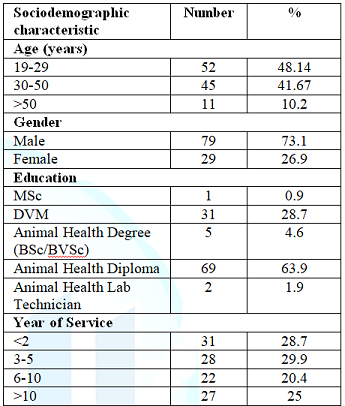
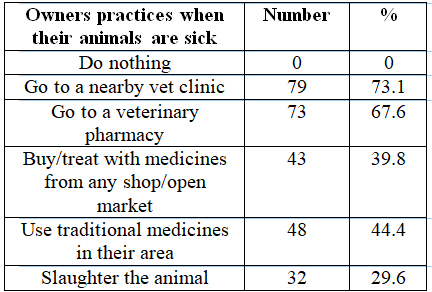
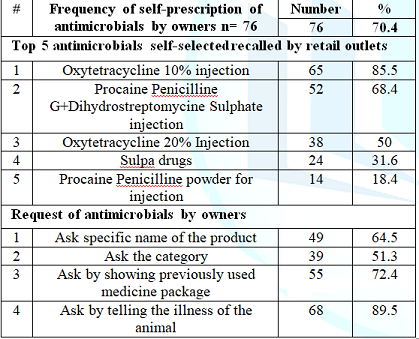
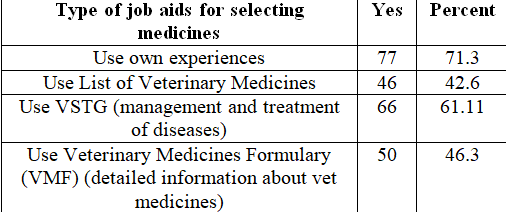

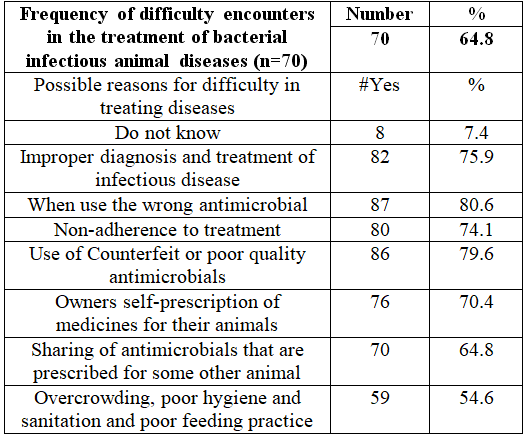
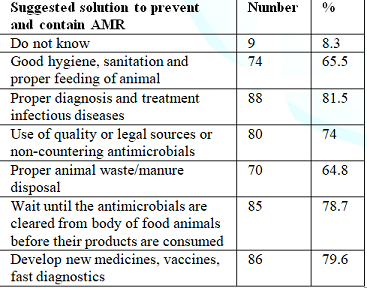
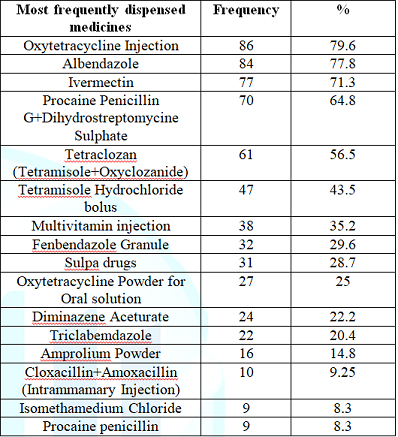
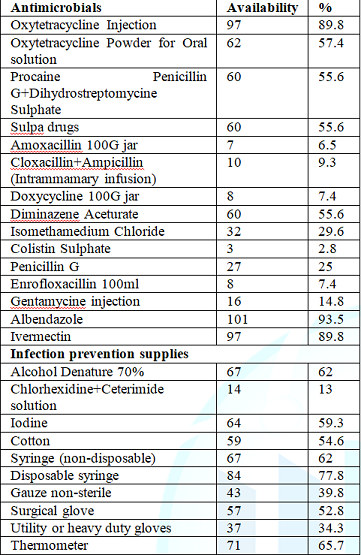
*Corresponding author
Citation
Keywords